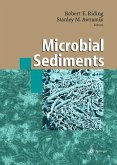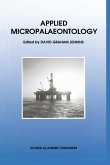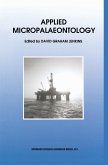This new edition synthesizes the methods used in microfacies analysis and details the potential of microfacies in evaluating depositional environments and diagenetic history, and, in particular, the application of microfacies data in the study of carbonate hydrocarbon reservoirs and the provenance of archaeological materials. Intensively updated instructive plates are showing thin-section photographs with detailed explanations form a central part of the content. The book is a useful base for teaching-learning and includes detailed captions for hundreds of microphotographs, boxed summaries of technical terms, many case studies, guidelines for the determination and evaluation of microfacies criteria. It furthermore provides self-testing exercises for recognition and characterization skills.
From the reviews:
"My general conclusion is: Flügel achieved a momentous job in newly summarising the huge volume of dispersed data of one type of geological phenomena as preserved in our billion-year (well, approximately!) old stratigraphic record - as evidenced alone by many of the author's theoretical and practical comparative diagrams and tables. Dear reader, don't be without this reference handbook, or mini-encyclopaedia! Every geological or Earth science company, college or university and research institute library ought to have a copy." -- Karl Wolf, The Australian Geologist, Newsletter, No. 135, p.45-46, June 30, 2005
"Written for upper level undergraduates and graduates and can also be used in research, exploration and production of hydrocarbons and ores. ... An appendix presents answers to exercises distributed throughout the text. ... It is clear that this work is the result of lifelong research ... . new aspects have been added, and up-to-date references and personal communications are used. ... A remarkable feature of the book is the abundance of excellent quality illustrations and the lengthy and detailed plate captions." (T. J .A. Reijers, Journal of Sedimentary Research, February, 2005)
"Microfacies is regarded as the total of all sedimentological and paleontological data ... . Excellently edited, with 330 figures and 151 plates of the highest quality ... the book will be a precious item in a geologist's collection. ... The book is clearly structured and presented. ... The book will be invaluable for geologists and geophysicists, both academic and those working in geologic prospection and industry. The wealth of figures is a good basis from which academic teachers can prepare their lectures for graduate students." (Marek Lewandowski, Pure and Applied Geophysics, Vol. 163, 2006)
"This version is a much expanded, up-to-date and very clearly laid out reference work ... . There should be copies in every university library and petrology teaching laboratory, oil company and service company and it should have a place on the shelves of every sedimentologist. It is a book the young sedimentologist will have to read methodically, and the experienced specialist can learn much from it." (Paul Wright, Geological Magazine, Vol. 143 (1), 2006)
"This encyclopedic book is a valuable reference for graduate students, faculties, researchers, and professionals dealing with aspects of carbonates ... . Hence, this book is highly recommended to librarians of universities, petroleum geology departments, research and development units of oil companies and other organizations, as well as professionals interested in carbonate rocks." (B. K. Sahu, American Association of Petroleum Geologists, Vol. 91 (4), April, 2007)
"My general conclusion is: Flügel achieved a momentous job in newly summarising the huge volume of dispersed data of one type of geological phenomena as preserved in our billion-year (well, approximately!) old stratigraphic record - as evidenced alone by many of the author's theoretical and practical comparative diagrams and tables. Dear reader, don't be without this reference handbook, or mini-encyclopaedia! Every geological or Earth science company, college or university and research institute library ought to have a copy." -- Karl Wolf, The Australian Geologist, Newsletter, No. 135, p.45-46, June 30, 2005
"Written for upper level undergraduates and graduates and can also be used in research, exploration and production of hydrocarbons and ores. ... An appendix presents answers to exercises distributed throughout the text. ... It is clear that this work is the result of lifelong research ... . new aspects have been added, and up-to-date references and personal communications are used. ... A remarkable feature of the book is the abundance of excellent quality illustrations and the lengthy and detailed plate captions." (T. J .A. Reijers, Journal of Sedimentary Research, February, 2005)
"Microfacies is regarded as the total of all sedimentological and paleontological data ... . Excellently edited, with 330 figures and 151 plates of the highest quality ... the book will be a precious item in a geologist's collection. ... The book is clearly structured and presented. ... The book will be invaluable for geologists and geophysicists, both academic and those working in geologic prospection and industry. The wealth of figures is a good basis from which academic teachers can prepare their lectures for graduate students." (Marek Lewandowski, Pure and Applied Geophysics, Vol. 163, 2006)
"This version is a much expanded, up-to-date and very clearly laid out reference work ... . There should be copies in every university library and petrology teaching laboratory, oil company and service company and it should have a place on the shelves of every sedimentologist. It is a book the young sedimentologist will have to read methodically, and the experienced specialist can learn much from it." (Paul Wright, Geological Magazine, Vol. 143 (1), 2006)
"This encyclopedic book is a valuable reference for graduate students, faculties, researchers, and professionals dealing with aspects of carbonates ... . Hence, this book is highly recommended to librarians of universities, petroleum geology departments, research and development units of oil companies and other organizations, as well as professionals interested in carbonate rocks." (B. K. Sahu, American Association of Petroleum Geologists, Vol. 91 (4), April, 2007)








